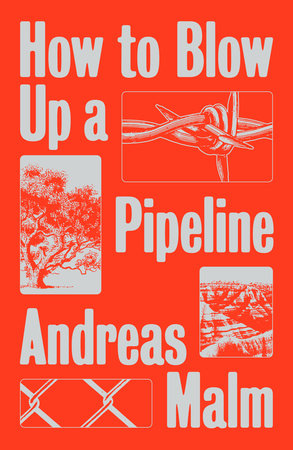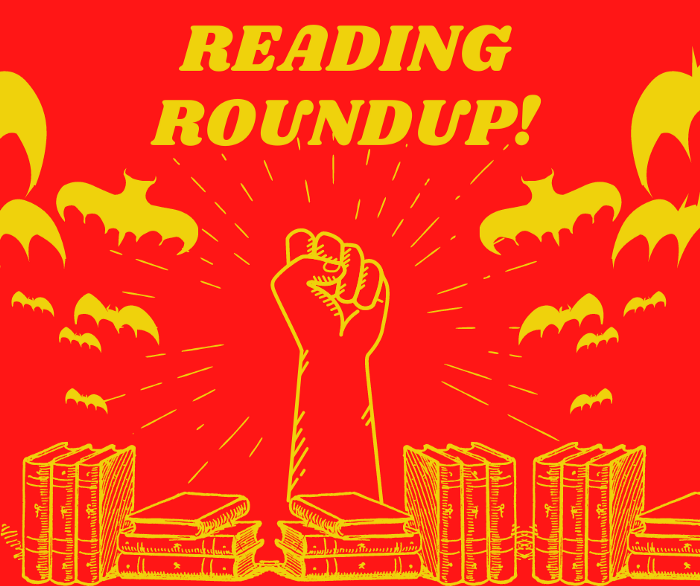Welcome to the Reading Roundup, a forum for ATX DSA members to share what they’ve been reading and how it’s informing their political education.
How to Blow Up a Pipeline
by Andreas Malm

This book does not tell you how to blow up a pipeline (although it does tell you how to artfully deflate SUV tires). Instead, the book explores if we should be blowing up pipelines as a response to the climate crisis. Spoiler alert–Malm says that we should allow for violence in the climate movement. He provides historical background for the mainstream climate movement, describing how and why it has ended up almost entirely non-violent. Notably, Malm examines the work of Extinction Rebellion in particular detail, putting a spotlight on the research and philosophy behind their strategy. Malm provides two major critiques of the organization. First, Extinction Rebellion does not incorporate class analysis into their strategy, and the climate crisis is a class issue. Secondly, the climate crisis is categorically different from past social challenges, so Malm is wary of making comparisons to past revolutions, and questions others for trying to do exactly that. His own work draws most heavily on the writing of Martin Luther King Jr., who is one of the icons usually trotted out to support non-violence tactics (despite King’s delicate consideration of the role violence plays). Malm also describes the semi-violent work that he has done with saboteurs in Europe, blocking mining sites with Occupy-like camps. How to Blow Up a Pipeline is a short and urgent read, and we need more urgency.
—Sara G.
The Power of Us
by Jay Van Bavel and Dominic Packer.

Though we might be tempted to pigeonhole them as callous, Van Bavel and Packer show us that, in fact, “bankers contain multitudes.” If I took anything away from this book, it wasn’t just that financial analysts contain multitudes, it’s that we all do. Our brains are wired for social identity. We can’t help it. We’re group-ish creatures. The ways we think and the ways we react to ideas, proposals, criticisms, anything, are shaped by the identities that are activated in our minds. We see the world as part of the groups we’re in, and this book shows us how and why group identities do this, particularly within politics. And fortunately, while we each contain a multitude of identities within us, we also possess the potential to adopt new ones: this presents the opportunity for new collectives of our own design. I think that’s an important message for building a movement.
—Philip M.
Where Do We Go from Here: Chaos or Community?
By Martin Luther King Jr.

MLK’s 1967 Where Do We Go from Here: Chaos or Community? was his last book before his murder in April of 1968. It’s a sobering assessment of the state of the Black Liberation movement after the monumental legislative wins of the civil rights movement in the years prior. He outlines many of the same challenges the Black Liberation movement faces today at the hands of racism and capitalism—economic as well as mental and spiritual. But he knew that without a powerful movement of organized, regular people, freedom could never truly be won. He had seen the impotence of legislation on its own. He points out that policy wonks and politicians will always demand a “plan” from the movement, when in reality what is needed is political will and organization of the people, the working class. Where there’s a will, there’s a way etc.
He champions the labor movement and class struggle as a primary means of building solidarity across racial groups because while imperfect, the union’s interest is naturally to include the needs of its most oppressed ranks. Otherwise, it would lose its leverage over the bosses. Of course, he sees a role for religious and social groups in building the day-to-day capacity of the movement, without which we can never truly transform society in moments of crisis.
This leads to his thoughts on what could be done to support the self-organization of the movement: a guaranteed income. He would begin the Poor People’s Campaign shortly after, and ends on a note of international solidarity with the exploited workers of the world. Even if we were to achieve the dream of his 1963 speech during the March on Washington in the US, we could not truly be free while our wealth is extracted from the labor of people in other, predominantly nonwhite, parts of the world.
An excellent read and my first full-length MLK book. The man is legendary for a reason.
—Ana P.
In Solidarity: Essays on Working-Class Organization in the United States
by Kim Moody

Kim Moody’s 2014 collection of essays In Solidarity touches on a wide range of topics with apparent ease, covering the process of class formation, the history of “union avoidance” in the US, reflections on the 2000s “civil war” in US labor, and different trends in the US political economy like the growth of the hospital sector. Of particular interest to the class struggle-minded reader is Moody’s seminal 2000 essay “The Rank-and-File Strategy” and the preceding “Toward the Working Class”, written for the 1966 Students for a Democratic Society Convention by Moody and two other SDSers. Taken as a whole, the book makes a strong case that even at a historic low in working-class organization in the US, there is still power in a union. Moody, in imagining a revitalized labor movement, takes a bottom-up approach, beginning with the organic workplace leaders, the so-called “militant minority”, and extending outward to a broader stratum of the working class. Recreating a strong militant current in the labor movement will take a lot of spadework and will encounter fierce resistance from both employers and bureaucratic union leadership, but, as we’ve seen from the recent triumph of reformers in the Teamsters, can nonetheless have great success. Moody, who worked in telephone in the 1970s (see Jacobin interview from 2018), and many other radicals of his generation decided to take an active role in the labor movement instead of just watching from the sidelines. Working-class radicals of our generation would do well to do the same.
—Jake J.
Interested in making a contribution to next month’s Reading Roundup? Send us an email at redfault@austindsa.org!

